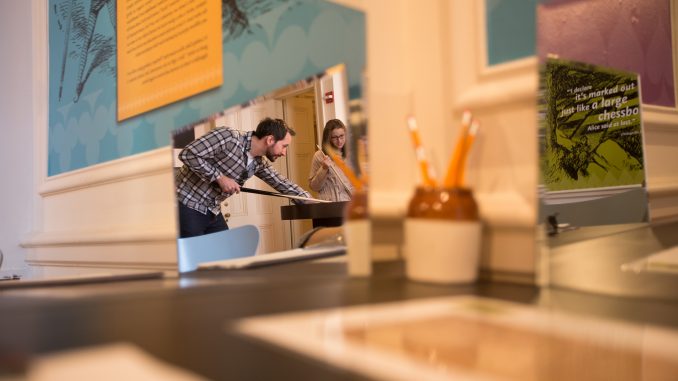
In 1928, Philadelphia native A.S.W. Rosenbach purchased an original manuscript of “Alice In Wonderland,” for today’s equivalent of $1 million.
As part of the 150th anniversary of the book’s release, the Rosenbach Museum, started by Rosenbach himself, is holding an exhibit on the book and its influence on popular culture.
“We were thinking about what elements of the work we wanted to look at,” co-curator Kathy Haas said. “We ended up looking at three different angles on both Alice and Carroll.”
The first section of the exhibit, “Wonderland Rules: Alice at 150,” focuses on the impact the text has had and why it is still relevant today.
“Before Carroll comes along, you pretty much just have these morality tales that were intended for children,” said Alice Emerson, manager of external relations at the Rosenbach. “If little Johnny does something bad, he gets punished, and things like that.”
Carroll changed that notion by emphasizing imagination and turning all of that adult authority into “nonsense.”
A second section of the exhibit delves into the connection between “Alice In Wonderland” and Philadelphia. When Rosenbach purchased the book, he brought it back to his collection and made international headlines. After World War II, the book eventually made its way back to British soil.
“Rosenbach and other Philadelphia philanthropists gifted the book back to its people,” Emerson said. “It was sort of a goodwill gesture after their help in World War II.”
The section also features handwritten letters between Carroll and various publishers and colleagues, as well as letters written by Alice Liddell, the daughter of a family friend who was the inspiration for the story. When a young Liddell asked to hear a story on a boating trip, Carroll told the first version of what would come to be known as “Alice In Wonderland.”
The final section of the exhibit, “Why Is A Raven Like A Writing Desk?” focuses on Carroll’s different riddles and puzzles. Carroll’s day job was a professor of mathematics at Oxford, where he went by his legal name Charles Dodgson.
“He loved puzzles,” Haas said. “And he invented a lot of them.”
The original manuscript Rosenbach purchased was on display for the first week of the exhibit, but has since been returned to England. A rare first-edition copy of “Alice’s Adventures In Wonderland,” as it was originally titled, can be seen in the exhibition.
“The first edition was recalled by Carroll because of printing problems, so not very many copies are out there,” Haas said.
Instead of recalling the books, the publishing company put in a new title page and sold the books to American readers.
The exhibit runs from now until May 15 at the Rosenbach. A fourth section of the exhibit will be added March 26, focusing on the photography of Lewis Carroll.
“There have been countless re-interpretations of this story throughout the years,” Emerson said. “But it can always be fresh, and I think that is a testament to the power of the story.”
Sami Rahman can be reached at sami.rahman@temple.edu.



Be the first to comment